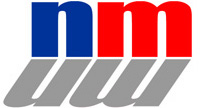

In addition to the enabling technology of the LCD, there are several other components that are critical to making the watch function properly. First of all, there has to be a timing mechanism (after all what is a watch that doesn’t keep time worth?). There has to be a controller to tell the display what time or date to display as well as set the time and date. There has to be a power source to drive the display, timing crystal, and controller. And finale, there has to be some means of connecting all of these components together.
Timing crystal
This timing mechanism is a quartz crystal that provides a constant-frequency
signal to the electronic circuit in the watch. When certain crystals, including
quartz, are excited with an electric field, they vibrate at a particular frequency.
This vibration can be sensed electronically to provide a means for observing
the vibrational frequency of the crystal.
Controller/IC “chip”
The integrated circuit (IC) or “chip” is programmed with the frequency
of the crystal and “knows” how many cycles must pass in each second.
Once that number of cycles has passed, it increments the second count by one.
After 60 seconds it increments the minute readout. After 60 minutes it increments
the hour readout. After 24 hours it increments the date readout, etc. The IC
must tell the LCD what segments need to be turned on or off in order to display
the correct digits in the LCD. The IC also stores the current date and time
and has a means for setting them. This is usually done by connecting two or
more “pins,” or leads, from the IC chip together. Since the IC chip
is so small, the pins are connected to tabs on the side of the watch that are
pressed to make the contact.
Battery
A 1.5 V alkaline batter is used to supply the power to the LCD, IC chip, and
timing crystal.
Printed circuit board
In order to make all of the electrical connections, a printed circuit board
is used that is placed in a specific position relative to the other components
in the watch. The printed circuit board consists of several conductive paths
made of metal on a plastic substrate. These paths connect the pins on the IC
to the battery, timing crystal, and contact pads for setting the time and date.
The connection to the LCD is a little different than the others since it requires
more precise alignment of the conductive paths and the LCD in order to properly
address each segment in the LCD. This is accomplished with a specially designed
piece of rubber.
Conductive rubber laminate
The conductive rubber laminate is a layered structure of alternating layers
of electronically conductive and electronically insulating material. This arrangement
allows for the conduction of electricity in one direction, but not the other.
[LCD Watch] back | forward [Watch Experiment]